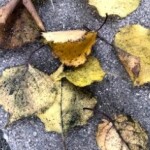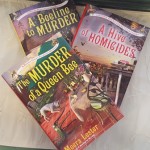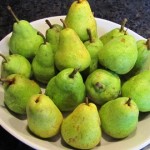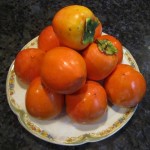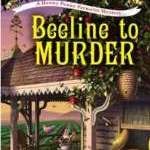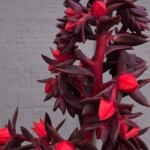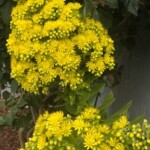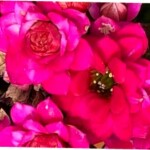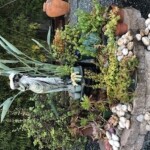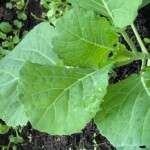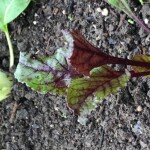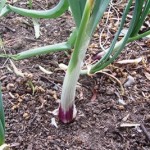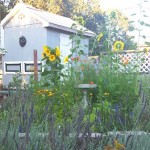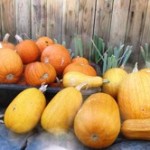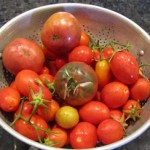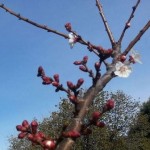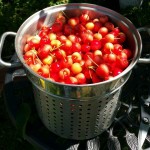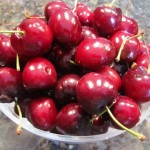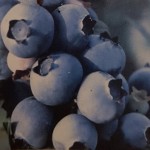Archive for the 'Gardening' Category
How to Create Winter Garden Interest
A winter garden doesn’t have to be drab. You can create beauty during the bleakest time of the year with winter perennials, ornamental grasses, shrubs with berries, trees that provide interesting bark, and perennial flowers. Put plants in during autumn for enjoyment throughout the short, dark days ahead.
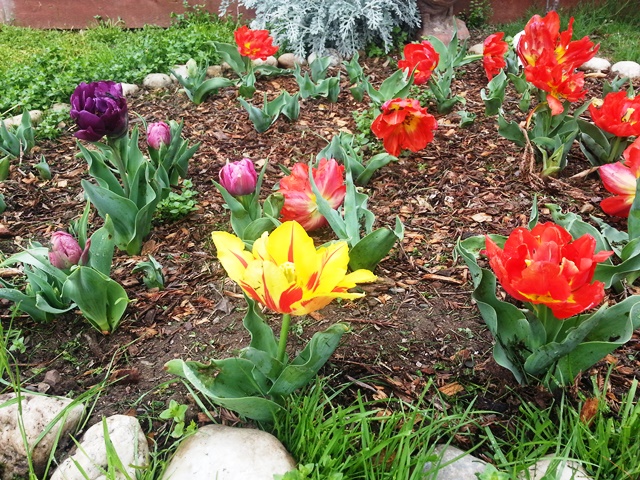
BULBS
Buy bags of bulbs now and plant them for a late winter/early spring bloom. For example, crocus, daffodil, grape hyacinth, Dutchman breeches, and tulip bulbs are available in garden centers now. You’ll find bulbs in nurseries prepackaged in bags or piled high in baskets or barrels with scoops and paper bags for self service.
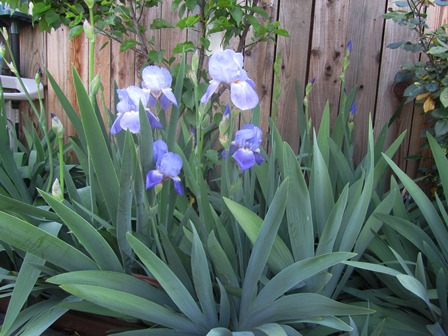
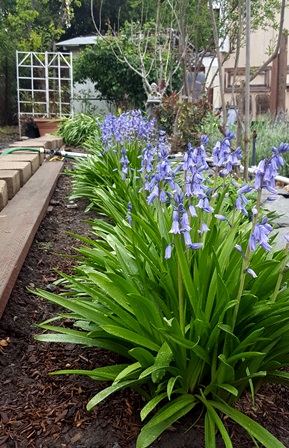
The rhizome of Siberian Iris sends tall shoots of green foliage and then produces blooms in a range of colors from white to yellow and purple. Dutch and Spanish iris are best planted in the fall. Peonies are also a good option. The peony foliage dies back in winter but the plant emerges in late winter or early spring and rewards with gorgeous blooms. Peonies come in a variety of colors, not just pink and rose. Check them out.
SHRUBS
Winter Jasmine (yellow blooms), witch hazel, pussy willows, sweet box (honey-scented flowers), and ornamental red twig dogwood or Siberian dogwood (stunning red stems and branches) make excellent choices for a winter garden. Winter heath are low-growing plants with foliage of soft yellow, bronze, gold, and pale green. The flowers are bell shaped or tubular in a range of colors, including magenta, white, pink, and red-purple. The plant will even bloom under the snow.
PERENNIALS
Cyclamen, pansy, viola, primrose,hellebore, echinacea, coral bells, heliopsis (looks similar to sunflower), and the “Moonbeam” coreopsis are just a few of the many colorful perennials available for winter color. Lenten rose often blooms around the time of Lent but is also called Christmas rose because it can bloom as early as December in warmer climates.

VINES
Consider the beauty of flowering vines in the winter garden. Self-climbing hydrangea can scale an ugly wall and turn it into a thing of beauty. Pyracantha is valued for it’s hardiness as well as green foliage and abundant red-orange berries in winter. Honeysuckle and flowering jasmine feature lots of small and heavily scented flowers. Wisteria looks stunning draped over a pergola or trellis where its flowers form stunning bracts of color in late winter or early spring. Cape honeysuckle, a broad leaf evergreen vine, produces blazing orange blooms against dark green leaves. It’s often grown as a shrub.
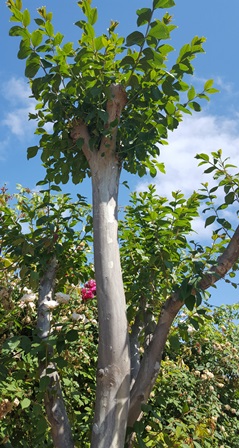
TREES
Holly is the classic evergreen tree for the winter garden, creating interest with dazzling red berries amid dark green foliage. Sango Kaku is a small Japanese maple that displays stunning red bark on its trunk in winter. The white birch is another tree that adds interest in a barren winter garden. Plant one to make a statement or group three together to create a focal point. There’s no missing the drama of a redbud tree in full bloom. These gorgeous trees produce flowers before leaves in early March. They make a showy display in any landscape, whether field, farm, or garden.
_______________________________________________
If you enjoy reading about country living topics, you might also like my Henny Penny Farmette series of cozy mysteries, available online and wherever books are sold. The three novels in the series are: BEELINE TO MURDER, THE MURDER OF A QUEEN BEE, and A HIVE OF HOMICIDES.
Grow Something New in 2022
Seeds planted in soil trigger feelings in gardeners akin to giving birth. It’s all about birthing life in the garden. Reading about seeds is almost as good. Many of us consult seed catalogues throughout the winter in anticipation of spring planting. Often, we will stick to plants that have performed well for us.
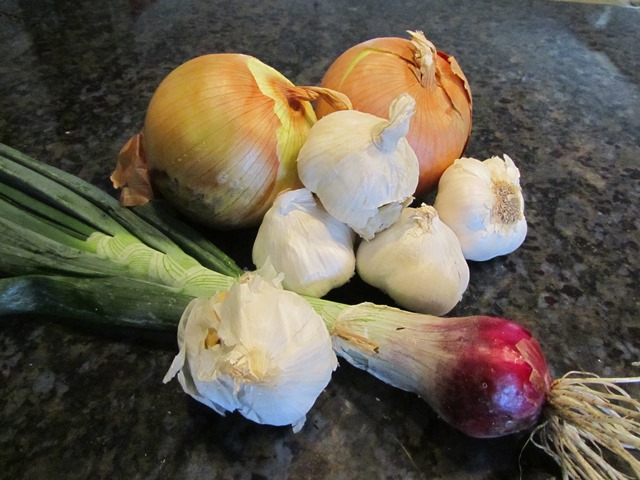
This year, I suggest trying something new, perhaps a type of heirloom cucumber known as Hmong Red, a lovely variety of squash known as Gelber-Englischer custard squash, or Zapotec Green corn. It’s doubtful you’ll find the above-mentioned seeds in your local DIY garden center. These seeds are heirlooms marketed through The Baker Creek Heirloom Seed Company, founded by Jere and Emilee Gettle, authors of The Heirloom Life Gardener.
Heirloom seeds go far beyond the heirloom tomato and other vegetables offered at local DIY outlets and garden centers. And Baker Creek isn’t the only seed company with a catalog and shops that sell heirlooms. But they’ve worked very hard at making the Baker Creek name synonymous with the grow-your-own-food revolution that focuses on seed not altered by scientists. In other words, the seed has not been genetically modified (GMO).
Thousands of types of heirloom vegetable seeds are available when you know where to look for them. Search for catalogues online. Among others, check out: https://www.seedsavers.org/catalog, https://www.rareseeds.com, and https://www.edenbrothers.com/store/heirloom_seeds.html
Worst Apricot Aphids Ever
The farmette apricot trees have been shedding leaves as winter approaches. I’ve recently noticed ants in the tree and leaves that are sticky. Further investigation revealed that the tree leaves are covered with apricot aphids seeking moisture and nutrients from the leaves.
The local garden center’s expert explained that those tiny aphids know when the seasons are changing. As leaves fall, they take in nutrients to tide them over to spring. Ants often signal a pest problem with the tree long before you notice the presence of aphids.
Like many pests attacking apricot trees, aphids overwinter as eggs (smaller than a grain of rice). These eggs are hidden in the cracks and crevices of the bark, branches, and twigs.
During this past fall (2021), aphids flew around our apricot and other fruit trees like ash on a windy day. They consumed leaf and stem sap that resulted in a sticky substance known as honeydew, a sticky waste product left on the leaves.
It’s worth mentioning that aphids aren’t the only apricot tree pests. A partial list of other apricot tree pests includes:
1. mealybugs
2. earwigs
3. mites
4. leaf roller
5. apricot-peach twig borer
6. scale
7. spider mites
Although we don’t like using any kind of spray out of concern over toxicity to our honeybees, our local garden center recommends using an organic spray such as Captain Jack’s (approved for organic farming). This time of year, it’s a good idea to apply the spray after pruning the trees.
Doing a good job with pruning and spraying means that the aphids might not be such a problem come spring.
____________________________________________________________________________
Enjoy reading about farm topics? Check out my Henny Penny Farmette series of cozy mysteries. Chocked full of farm trivia and helpful advice for keeping chickens and bees and growing heirloom fruit and vegetables, all three novels are available online and in bookstores everywhere.
A Beeline to Murder–When the town’s celebrity pastry chef is found dead, Abby Mackenzie (a former cop who supplies the chef with her organic lavender honey) discovers the chef’s secret private life suggests the killer might be local.
The Murder of a Queen Bee–The botanical shop owner and friend of Abby Mackenzie doesn’t make it to a party where she’s the guest of honor. Her death leads Abby to speculate that friends of the deceased might be hiding her killer.
A Hive of Homicides–Abby attends a vow-renewal party of her best friend and is an ear witness to the murder of the newly arrived re-married couple. The husband’s philandering past establishes a pool of suspects but Abby is convinced that there’s more to the murder a scorned lover’s revenge.
The Fall “P” Fruits Are Ripening on the Farmette
Our pears, persimmons, and pomegranates hang heavy on the trees now. This despite the scorching summer we’ve had and the lack of rain. Water restrictions have made it doubly difficult for the fruits of these trees to reach their full potential.
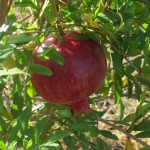
Ripe pomegranates have a leathery outer skin, membranes thicker than oranges, but sweet, juicy seeds inside
The squirrels and raccoons have been munching on the late summer pears. Yesterday, I stripped most of the fruit off and placed in paper bags in the kitchen cabinet. In two to three days, the pears will reach the perfect ripeness for eating fresh.
Fuju and hachiya persimmons are taking on color and should be ripe and ready to eat in about a month. I’ve been working hard to save the trees that are suffering from California’s extreme drought.
A spokesman for one Bay Area water resource board suggested we gardeners let our ornamental plants like roses and other flowers go while we try to save our trees. A hard thing for me to do. Praying for rain, we hold out hope that next year’s climate will be better for backyard gardeners and growers.
______________________________________________________________________________
Interested in backyard gardening topics like keeping chickens and bees or growing heirloom vegetables? Check out my cozy mystery series from Kensington. The stories are informed by my work on the farmette I’ve been restoring for a dozen years. Find all Meera Lester books on Amazon.com, Barnesandnoble.com, and everywhere books are sold online or in brick and mortar stores.
Beeline to Murder features a former cop who keeps bees
and sells lavender honey to her town’s celebrity chef . . . until
she finds him dead.

The town of Las Flores is abuzz with the news of the death of a free spirit who has secrets in her background and ties to a local nudist camp.

The renewal of wedding vows ends on the steps of the church with the outburst of a local woman intent on revenge. The husband is soon found dead but the obvious suspect may not be the culprit at all.
Succulents Do Best Without the Fuss
Succulents are popular plants for growing both indoors and out because they require little attention beyond healthy soil, sunshine (light), and water.
Worldwide, there are over 10,000 known succulent species.
As a houseplant, a potted succulent can provide a focal point on a windowsill, enhance the beauty of a bathroom or bedroom, or brighten almost any dark corner. They store water in their leaves and stems to release moisture into your environment. Some produce spectacular blooms in gorgeous colors.
Succulents remove impurities in the air also known as “volatile organic compounds” through a process known as respiration–giving off oxygen and absorbing carbon dioxide.
The subtle ways in which the human body benefits from contact with nature are numerous. Having succulents as houseplants provides that important link to nature for many people.
Succulents can be grown outdoors in temperate climates.
Group several varieties together to make a dramatic focal point for a courtyard or garden. With so many possibilities for using succulents in your home and garden, now is a great time to create something beautiful with easy-to-grow, easy-to-propagate simply beautiful succulents.
Find a variety of succulents at your local nursery, DIY garden center, or online.
_____________________________________________________________________________________________
Enjoy gardening and country living topics? Check out my Henny Penny Farmette series of cozy mysteries from Kensington Publishing, NY. Tucked inside these novels are tips for growing heirloom plants, keeping chickens and bees, caring for fruit trees, preserving organic produce, and other urban farmette topics.
Or, check out my wellness and spirituality books for living your best life now. All are available online and wherever books are sold.
A BEELINE TO MURDER
THE MURDER OF A QUEEN BEE
A HIVE OF HOMICIDES

More than 150 rituals for sound mind, strong body, and meaningful connections to the people around you
Gardening under Glass
This year I planted a winter garden. I’m growing most of my vegetables in cold frames.
When the water outside is frozen and the grass and rooftops glisten with frost, it’s a thrill to see lush green vegetables growing under glass in my garden.
Vegetables like spinach, broccoli, French breakfast radishes, bok choy, and sugar snap peas are thriving where they’ve been planted in good soil under a cold frame.
Cold frames are easy to construct. Basically, they are transparent covers over a prepared bed of soil. Mine are made of old, salvaged windows that crank open and are mounted atop some of our four-by-six-foot raised beds. Cold frames protect against rain, wind, ice, and snow. The frames can even protect somewhat against infestation by common pests.
It’s important to provide ventilation by opening the cold frame on warm days. Under glass, the heat intensifies and could burn your tender plants. When night-time temps plunge, keep the cold frame closed. You can pile further insulation against the frames using bales of straw or hay or bags of raked leaves.
Inside these protected glass spaces this time of year (in deep December), a variety of cool-season crops can be cultivated. Consider planting seedlings of green leafy plants like kale, mustard greens, cabbages, turnips, radishes, carrots, beets, lettuces, broccoli, and onions.
Our farmette is located in Zone 15. We live in a sheltered valley inland from the San Francisco Bay and east of the Berkeley hills. We get really hot summers with temperatures that climb into triple digits. In winter, we get frost and freezes and more rarely a dusting of snow.
Long after other gardeners in our area have put away their trowels and shovels, I’m still at it. Gardening puts food on the table. When we are quarantining ourselves from others, we can focus on our passion for gardening and grow cool-season crops in late fall, early spring, and, yes, even in winter with the help of a cold frame or two.
_______________________________________________________________
If you enjoy reading about country living, gardening, or keeping chickens or bees, check out my series of cozy mysteries that are chocked full of tips, recipes, and facts about living on a farmette.
Also, check out my popular self-help, wellness, and spirituality books. All are available online or wherever books are sold and are available in a variety of formats.

More than 150 rituals for sound mind, strong body, and meaningful connections to the people around you
In Nature Now, Fall Fruits Hang Like Jewels
On the Henny Penny Farmette, the signs of autumn’s arrival are evident almost everywhere in our orchard and garden.
I’ve made jams, cooked produce, and dried fruit. Of late, I’ve been harvesting heirloom seeds for next year’s garden. The birds will pick over what’s left and the soil can rest. Fall fruit now hangs on the trees in a showy splendor.
The pomegranate trees support a multitude of leathery-skinned, ruby-red fruit holding hundreds of sweet seeds. On the Fuyu and Hachiya persimmon trees, the golden fruits hang like ornaments. In the squash patch, French sugar pumpkins cling to dry, stringlike vines and you might find a butternut squash here or there.
I picked most of the late summer pears two weeks ago, putting a few in paper bags and storing them in a cabinet for two days. That allows them to reach the perfect ripeness for eating them fresh.
We grew corn this year, but the triple-digit heat and smoke from wildfires turned the lush, tall green plants to papery stalks before the corn really ripened. Still, before the stalks can now be composted, a few can be bundled together and placed in a porch corner to symbolize the arrival of Autumn and her festivals.
_________________________________________________________________________
If you enjoy reading about country living topics, check out my Henny Penny Farmette series of mysteries.
Also, I have written extensively about self-help, spirituality, and wellness. Find my books on Amazon, Barnes & Noble, Kobo Books, and everywhere books are sold, online or in brick-and-mortar stores.

More than 150 rituals for sound mind, strong body, and meaningful connections to the people around you
Saving Tomato Seeds
In my Henny Penny Farmette garden this year, I grew different varieties of heirloom tomatoes: German Queen, Mortgage Lifter, Paul Robson (a Russian heirloom), Mt. Vesuvius, San Marzano, and others.
It’s the end of the season and my work now is to save seed and compost other plants that are no longer producing. Over the next couple of months, I’ll turn the soil and add amendments.
Since my tomato plants are open-pollinated, heirloom types (as opposed to patented hybrids), I can have a reasonable expectation of how the seeds will perform once planted in a future garden.
A word of warning about using patented hybrid seeds–growing plants from hybrid seed will not come true in your next year’s garden. They will likely be inferior plants compared to their parents.
However, open-pollinated seeds produce tomato plants that remain true to the parent plants (of course, some slight variation in nature is possible). But you can know with certainty that those seeds will remain true just as they have through generations of gardens.
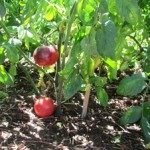
These are heirloom blue tomatoes. Avoid planting tomatoes in the same garden location year after year because of tomato blight and black rot. Let the soil recover for three years–tomatoes are heavy feeders.
When choosing which tomatoes to save seed from, keep two criteria in mind:
1) Choose tomatoes from vigorous plants, free of disease.
2) Select seed from tomatoes with characteristics (like the taste, skin thickness, size, and abundance) that you prefer.
I utilize a simple three-step method for saving my tomato seeds. I always select a prime tomato specimen that has reached its peak to be used for harvesting seed.
1. Use a sheet of paper towel for each type of tomato seed you are saving. Write on one corner of the paper towel the type of tomato seed and the year grown and whether determinate (often called bush) or indeterminate (vine which will keep growing until killed by frost). Most heirloom tomatoes are indeterminate.
2. Cut open the tomato and then scrape out seeds and spread them out across a paper towel. I put these towels on my kitchen counter or in a window to dry for 10-14 days.
3. Fold the paper towel and slip it into a paper envelope to use for your next year’s garden. I use one envelope per paper towel to ensure air circulation for good drying.
Come spring, these seeds can be planted into cell packs to become seedlings. Or, you can plant them directly into the garden after all danger of frost has passed.
___________________________________________________________________
If you enjoy reading about garden topics and like mysteries, check out my Henny Penny Farmette series of cozy mysteries, including A BEELINE TO MURDER, THE MURDER OF A QUEEN BEE, and A HIVE OF HOMICIDES (Kensington Publishing, NY).
I’ve also written dozens of health and wellness and spirituality books, all available online and everywhere books are sold.

More than 150 rituals for sound mind, strong body, and meaningful connections to the people around you
Growing a Bountiful Crop of Sweet Cherries
Cherries are perfectly suited for growing well in our northern California climate. About ten years ago, we planted several sweet cherry trees–Bing, Stella, and Black Tartarian. They’ve proven to be easy trees to grow and reward us with bountiful crops of sweet, ripe cherries around Memorial Day each year.
If you want to grow some sweet cherries, you’ll need to space for a tree or two. Sour cherries will self pollinate but sweet cherries need a pollinator and that means you’ll need to plant two trees 30 to 40 feet apart unless you are growing a dwarf variety. Dwarf trees should be spaced 5 to 10 feet apart. The trees need sun, good air circulation, and well-drained fertile soil. Drainage is important because cherry trees are susceptible to root rot.
Once the trees are established, prune in early spring to remove large limbs or those that are broken, damaged, or too weak to produce fruit. In late summer, a second pruning can be done (this one less aggressive) to open up the canopy and improve air circulation.
A newly planted cherry tree can take three to five years to produce fruit. But you’ll be rewarded when your full-size tree produces 40 to 50 quarts of ripe fruit. In Northern California, cherries ripen from early June to late July.
You’ll be sharing your ripe cherries with the birds unless you use netting over your tree. A bird will peck a single hole in a perfect cherry and then move on, leaving the damaged cherry to rot on the tree. Local wildlife such as opossums and raccoons also enjoy feasting on cherries, climbing the trees to reach the fruit.
Cherries must be picked at the peak of perfection for if they are picked too soon, the fruit will not slowly ripen in your kitchen. Cherries are more perishable than blueberries, so wash and eat them soon after picking. A pit remover makes it easy to remove the stone from the center of the fruit.
Some people prefer sour cherries for making pies and jam and sweet cherries for eating fresh. Preserve cherries after removing the pits by canning in a hot water canner, drying them using a dehydrator, or freezing them.
______________________________________________________________________________
If you enjoy reading about our adventures in country living, check out my Henny Penny Farmette series of cozy mysteries. They’re chocked full of delicious recipes, gardening tips, and insights into keeping chickens and honeybees. Or, learn about how to take better care of yourself with my health, wellness, and spirituality books. All are available online and wherever books are sold.
Backyard Blueberries Taste Delicious and Are Easy to Grow
What’s not to love about blueberries. They’re almost a a perfect fruit. They are delicious, packed full of antioxidants, easy to grow, and add lovely landscape interest to any garden.
Grow blueberries in containers or in the ground but keep in mind that these plants like well-drained acidic soil. The pH should be on the low side, ranging from 4.5 to 5.5.
In the hottest inland valleys of the Bay Area, blueberries do best with morning sun and shade for hot afternoons. Northern Highbush varieties require winter chilling (800 to 1000 chill hours) to get the plants to produce fruit. Southern Highbush blueberries require from 700 to 1000 chill hours.
These plants benefit from an organic fertilizer with nitrogen.
Hold off on pruning for up to three years, allowing the plant to develop both a strong root system and bushy foliage. New plants begin to produce berries around the third year. During the third year, start pruning twice a year to remove inner and crossing branches to let in light and reduce the possibility of foliage disease.
Of the dozens of varieties of blueberries on the market today, among the Southern Highbush types is an early cultivar known as Misty. It produces a medium to large berry that is both sweet and spicy. The bush is upright with leaves that are blue-green turning to burgundy in autumn.
Sharpblue is another Southern Highbush variety that needs only 200 chill hours and produces dime-size fruit in abundance. The leaves remain green through fall and the bush is an outstanding specimen with high ornamental value in any garden.
For exceptional large berries with a robust flavor, give Southmoon a try. The berries are sweet; the plant, upright and vigorous. The plant will require 400 chill hours and will perform best in a sandy soil with lots of organic matter.
Whether you like your blueberries picked from the bush to eat fresh or baked into a delicious pie, give this plant a try. If you provide your blueberry plant the nutrients, sunlight, and water it requires, it will reward you with luscious fruit year after year.
_____________________________________________________
Order a copy of The Self-Care Planner for ideas about how to care for yourself. https://www.simonandschuster.com/books/The-Self-Care-Planner/Meera-Lester/9781507211649

Check out the Henny Penny Farmette series of cozy mysteries. Available for purchase from online and traditional bookstores everywhere
 Facebook
Facebook Goodreads
Goodreads LinkedIn
LinkedIn Meera Lester
Meera Lester Twitter
Twitter





